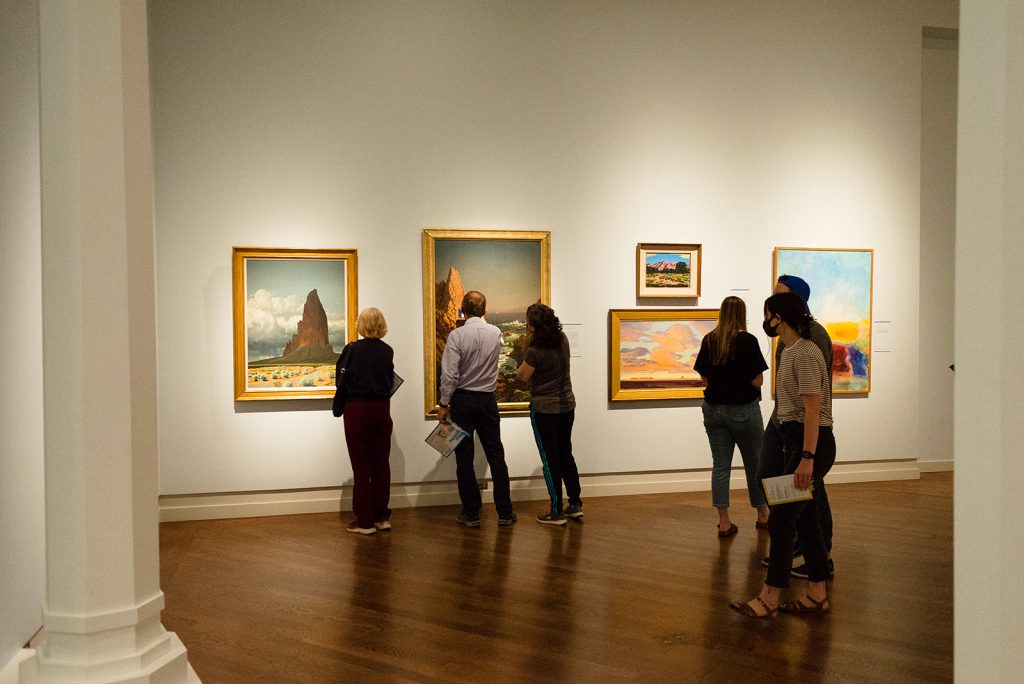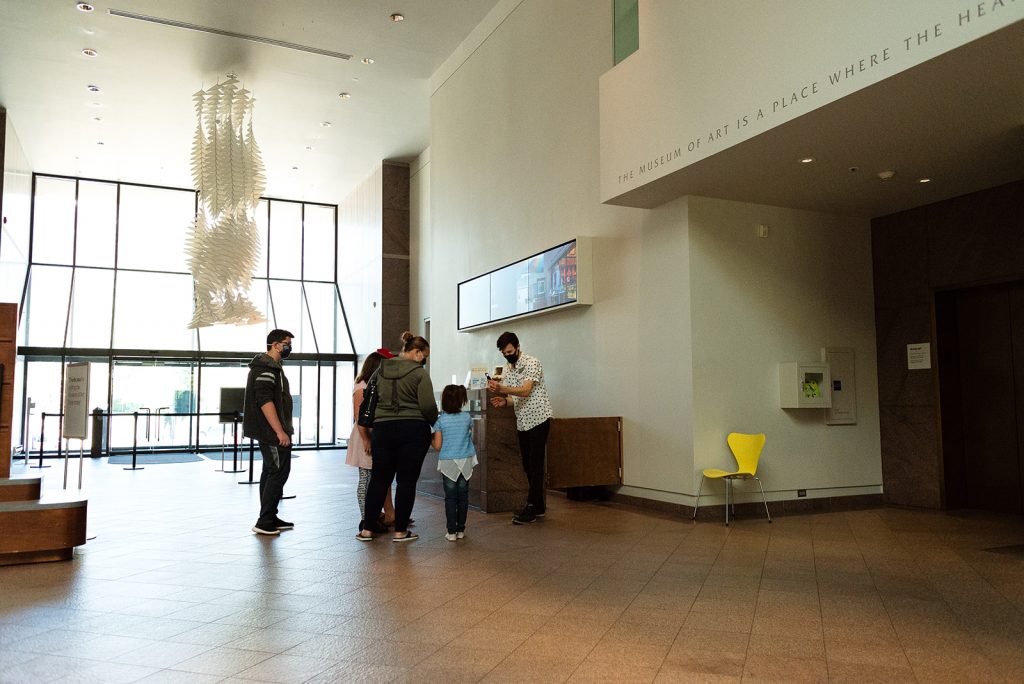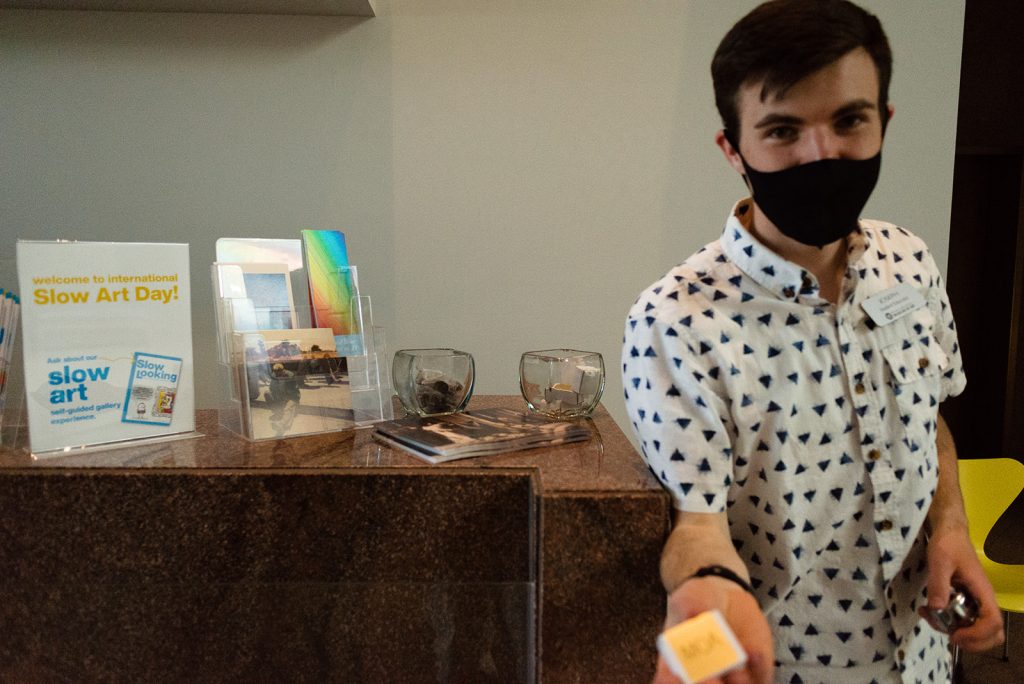For their fourth Slow Art Day, Brigham Young University (BYU) Museum of Art invited visitors to look slowly at the following four artworks from the temporary exhibition Spain and the Hispanic World: Treasures from the Hispanic Society Museum & Library:
- Miguel Alcañiz, “Ascension Panel from the Altarpiece of St. Vincent and St. Giles,” 1422-30
- Unknown Colombian Artist, “Portable Writing Desk,” ca. 1684
- Fray Alonso López de Herrera, “Virgin of the Immaculate Conception,” 1640
Painted on an engraved copper plate and displayed in a free-standing manner, allowing the visitor to explore the back of the painting.
- Joaquín Sorolla y Bastida, Sketch for “Visions of Spain,” 1912-13
Adjacent to a television monitor showing a slow-moving panoramic view of the finished painting.
Visitors were greeted at the entrance of the exhibition by a museum educator who explained the premise of Slow Art Day, and invited them to look slowly at the four works (which were chosen by staff for their visual complexity). Each piece was accompanied by a temporary label with slow-looking prompts that were intended to help viewers be more intentional in their experience with each artwork (see example below). At the end of the visit, the museum educator prompted participants to share something they noticed or experienced by slowing down with the artworks.




In total, there were 118 participants, and the hosts gave each of them a small gift as a thank you: kaleidoscopes were offered to children, and adults had the choice between a museum pin or sticker.
The event was a success, and several participants left positive feedback:
“I liked looking at the works from different angles. I wouldn’t have realized there was something on the back of the painting (Virgin of the Immaculate Conception) if I hadn’t moved around it.” (Adult visitor)
“I really liked the box (Portable Writing Desk). It had a lot of interesting designs on it.” (7 year-old child)
“It was so cool to see the big sketch (Sorolla) next to the finished painting on the TV.” (12 year-old visitor)
“I loved the idea of slowing down and appreciating the beauty around you – not just in the museum, but in life.” (Adult visitor with children)
At Slow Art Day HQ, we love that participants got a small gift for taking part in slowing down. It is also great to see Slow Art Day events being made available to children as well as adults.
We can’t wait to see what BYU Museum of Art comes up with for Slow Art Day in 2025.
-Johanna, Ashley, Jessica Jane, and Phyl
P.S. Stay up to date with events at the BYU Museum of Art through their social media platforms on Instagram, Facebook, Pinterest, X, or YouTube by using the handle @byumoa.




